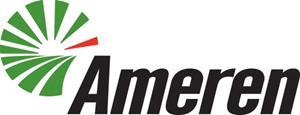With thousands of miles of high-voltage lines, Ameren Corp. wanted a better and safer way to monitor its assets spread over rural territories beyond manual or helicopter inspections. The St. Louis-based energy company worked with Black & Veatch and Collins Aerospace to identify a solution: Beyond Visual Line of Sight (BVLOS) drone flights.
The team now has proven they can inspect more miles of transmission lines faster and safer than ever envisioned.
On Nov. 8, the team was able to utilize a BVLOS drone on a non-stop, 60-mile flight to inspect transmission lines. The successful flight demonstrated the maturing technology’s promise of more efficient monitoring of expansive utility assets, especially in remote rural stretches.
In 2017, a BVLOS drone was used to inspect nearly 10 miles of Ameren’s power lines near Newton, Illinois. The 2018 flight, featuring a special use vertical take-off and landing drone, went six times the distance of last year’s flight. This long-range achievement underscores the revolutionary potential of drones in ensuring a resilient power supply, using an eye in the sky and imaging data captured by laser-based profiling called Light Detection and Ranging (LiDAR).
“At Ameren, innovation is at the core of all we do, and the solutions we incorporate today, such as Beyond Visual Line of Sight drones, will enable us to continue to deliver safe, reliable and affordable energy to our customers tomorrow and for generations to come,” said James Pierce, BVLOS program manager and lead of Ameren’s Central Unmanned Aircraft System (UAS) Department. “We are pleased with the outcome of this 60-mile flight, which demonstrates our commitment to identifying advancements in drone technology to increase reliability and customer satisfaction. Ultimately, the successful deployment of BVLOS drones could revolutionize how Ameren assesses and evaluates the condition of our systems.”
Drones are becoming more mainstream. Run-time is improving and applications continue to rapidly expand. Beyond reducing cost, easier access and improved employee safety, the benefits of Unmanned Aerial System (UAS) flights featuring high-definition images or video offer several advantages:
- Increased frequency of inspections with improved vantage points
- Ability to collect greater levels of data analyzed to assess transmission assets
- Improved system reliability and resiliency
- Reduced asset management costs
- Lower the impact to the landowners
This ultimately will lead to increased customer satisfaction.
“Our Control and Non-Payload Communications (CNPC) command and control radio network, along with our WebUAS℠ operations management service, were key to obtaining the airspace authorizations and ensuring technical success of the project – along with the efforts of our superb team of collaborators that included the University of Iowa Operator Performance Laboratory, Northern Plains UAS Test Range, Near Earth Autonomy, Latitude Engineering and pdvWireless,” said Boe Svatek, principal program manager, UAS Strategic Programs for Collins Aerospace.
Ameren’s achievement, the second and final phase of the pilotless project by the three companies, comes at an evolving time for UAVs and Federal Aviation Administration (FAA) governance. Today the FAA prohibits the use of drones beyond an operator’s sight and under other specific circumstances. Black & Veatch and Collins Aerospace obtained an FAA waiver for the recent test given their considerable expertise with drones and history of exemplary stewardship of airspace.
Though BVLOS authorizations remain rare, linear infrastructure inspection requiring BVLOS offer significant promise for improved safety and efficiency over traditional inspection methods. The Ameren flight showed that an Unmanned Aerial Vehicle (UAV) can collect high-resolution infrastructure integrity data, just like traditionally manned helicopters do today, but at a fraction of the fuel required and with significantly greater flight duration.
“This project is a further confirmation that unmanned aerial vehicles can move utilities beyond reactive maintenance by quickly and safely acquiring condition and performance data about their assets, which will lead to improved operations and longer asset life,” said Jamare Bates, an FAA-certified remote unmanned aircraft systems pilot who heads UAS operations at Black & Veatch. “We can speed inspection time, reduce inspection costs and accelerate the integration of analyzed data into a client’s enterprise asset management (EAM) system, for improved decision making.”
Other collaborators on the trailblazing Ameren flight included:
- Northern Plains UAS Test Range, which provided the Pulse Vapor-55 BVOS certificate of authorization (COA) for LiDAR-based data collection flights of transmission line infrastructure.
- University of Iowa’s Operator Performance Laboratory, which contributed the HQ-90 BVLOS COA for long-range flights and owns and operates the Latitude HQ-90 and Pulse Vapor-55. The lab team also conducted significant pre-flight equipment integration activities and developed the mobile ground support infrastructure.
- Near Earth Autonomy, maker of the LiDAR sensor flown with the Pulse Vapor-55.
- Latitude Engineering, maker of the Latitude HQ-90, chosen for its proven BVLOS capabilities.
- pdvWireless, provider of licensed spectrum utilized by Collins Aerospace’s CNCP radios integrated into Ameren’s secure network.
Source: Press Release

